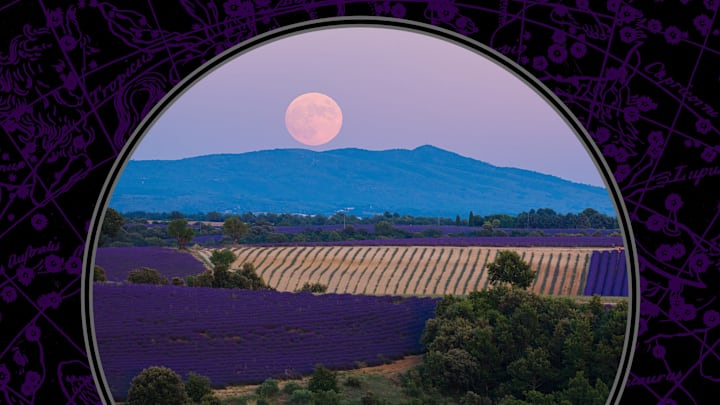Skygazers know that the arrival of May’s full moon—dubbed the “flower moon”—is a harbinger of warmer weather, burgeoning plants, and animal activity. Here’s everything you need to know about the occasion.
What Is the Flower Moon?
The flower moon is simply the full moon that occurs in the month of May. North American folklore mentions the full moon’s appearance at the height of spring, when wildflowers begin to bloom, trees unfurl their leaves, and pollinators like butterflies and moths start feeding on the plants’ nectar. Indigenous peoples have their own nicknames for May’s full moon—the Creek and Choctaw call it “the mulberry moon,” referencing the berry native to the southeastern U.S., and tribes in the Pacific Northwest have called it “camas blooming time.” Camas—a flowering plant with a bulb that looks like an onion—is a traditional food harvested from April through June [PDF].
The flower moon became a pop culture phenomenon with the release of Martin Scorsese’s epic film Killers of the Flower Moon in 2023, based on the nonfiction book of the same name by David Grann. The film tells the true story of a string of murders among the oil-rich Osage Nation in the 1920s. One of the 24 known victims, Anna Brown—the sister of Mollie Burkhart, played by Lily Gladstone in the movie—was killed on the night of the flower moon in 1921. Her murderers were later convicted of their multiple crimes.
When to See the Flower Moon
To catch 2024’s full flower moon, look skyward on Thursday, May 23. The next full moon will be June's strawberry moon on June 21, so named because June is the traditional time of the year to gather ripe berries.
Read More Stories About the Moon:
A version of this article was originally published in 2019 and has been updated for 2024.
